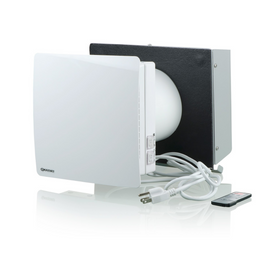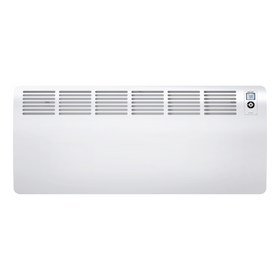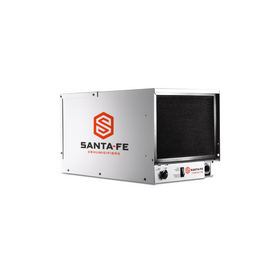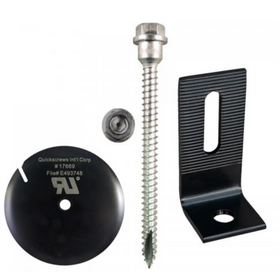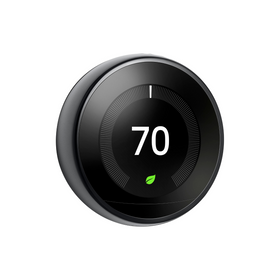
Resilient Home Design: What is It?
Last Updated: Apr 7, 2025Sustainable construction methods are supposed to reduce energy consumption and greenhouse gas emissions, improve indoor air quality, and sustainably source materials for our homes. Best practices and technologies can undoubtedly achieve some of these lofty goals. But, sustainable homes also offer another critical and palpable benefit for homeowners everywhere: resiliency.
Table of Contents
- What Is Resiliency?
- Our Increasing Vulnerability
- The Susceptibility of Modern Homes to Climate Change
- What Makes a Home Resilient?
- Bottom Line
What Is Resiliency?
Resiliency is the capacity to recover quickly from difficulties or moments of crisis
Climate change is a reality that we now must collectively face, but how those rising temperatures will affect our livelihoods is still debatable. Sustainable housing alternatives will help us collectively reduce our carbon emissions to limit the long-term, potentially devastating effects of climate change. Sustainable construction methods can help safeguard homeowners from extreme weather events. So, green homes are also resilient homes!

Our Increasing Vulnerability
The year 2017 tied a national record for weather disasters that topped 1 billion dollars in damages. At least 15 different weather events (including wildfires, tornadoes, droughts, floods, and hurricanes) cost the United States billions of dollars in weather-related damages. According to the National Oceanic and Atmospheric Administration (NOAA), the collective cost of these weather-related events (most of which were linked in some way to climate change) was upwards of 300 billion dollars.
While crop losses due to droughts and wildfires accounted for some of this total, damages to homes and properties were, by far, the most significant part of this economic damages. From homes flooded during Hurricane Harvey in Houston to homes completely burned to the ground during the California firestorm, climate change events have increased our homes' vulnerability.
On top of that, climate change also negatively affects the housing market. For example, the World Bank suggests that a 1% increase in the yearly probability of flooding is associated with a 0.6% decrease in housing prices.
The Susceptibility of Modern Homes to Climate Change
Unfortunately, most homes today are built with very little consideration for maximizing resiliency in the face of climate change's imminent effects. Home contractors often focus exclusively on maximizing the number of units built in a given space. They pay little consideration to factors like the home's angle, which could maximize the opportunity for passive solar construction and potentially keep homes warm during extended power outages.
Moreover, most homes rely almost exclusively on municipal utilities and services, including electricity, gas, water, waste, and sewer systems. If climate change were to disrupt any of these extremely long supply chains, most homeowners would be unprepared to keep their homes livable.

What Makes a Home Resilient?
Resilient design in housing focuses on the ethic or value of increasing the autonomy of a home. In other words, resilient homes attempt to limit their dependency on external inputs while supplying their energy, water, waste, and sewer disposal needs.
Resilient homes differ based on their geographical location. A resilient home in northern California will look much different from a resilient home on Texas's Gulf Coast. Each region's specific climatic conditions will largely determine the construction methods to maximize homes' resiliency in a given area. Nonetheless, there are a few characteristics shared by resilient homes everywhere.

Resilient Homes Produce Energy
During a harsh cold spell in 2018, at least 11 people died in the northeastern part of the US due to power outages that made it impossible for them to heat their homes. Similarly, during a heatwave earlier that summer in the UK, nearly 700 more deaths than average were recorded, mostly due to heat-related symptoms caused by power outages and lack of air conditioning. Renewable energy radically reduces the carbon footprint of a home. It can also reduce reliance on electrical grids that are increasingly vulnerable to climate-related outages.
To increase the resiliency of a home renewable energy system, investing in quality battery power is necessary. Without a battery system to store excess energy captured by solar panels or wind turbines, your home will still be susceptible to power outages during times of low or zero energy production.

Resilient Homes Use Smart Siting
You may have dreamed of building your custom home on top of a ridge overlooking a beautiful valley. However, that location might leave your home exposed to hurricane-force winds during intense storms that will be increasingly likely in the coming years. Builders of resilient homes will choose the home's position carefully and use smart siting strategies to protect from wind tunnels, flood plains, and other regions where extreme climate events could harm or damage. Resilient homes should also incorporate passive solar design and be oriented to take advantage of the natural elements and increase their energy performance and efficiency.
Tobias Roberts
Tobias runs an agroecology farm and a natural building collective in the mountains of El Salvador. He specializes in earthen construction methods and uses permaculture design methods to integrate structures into the sustainability of the landscape.

